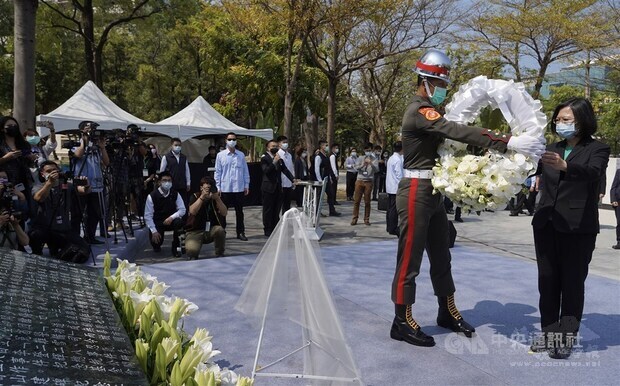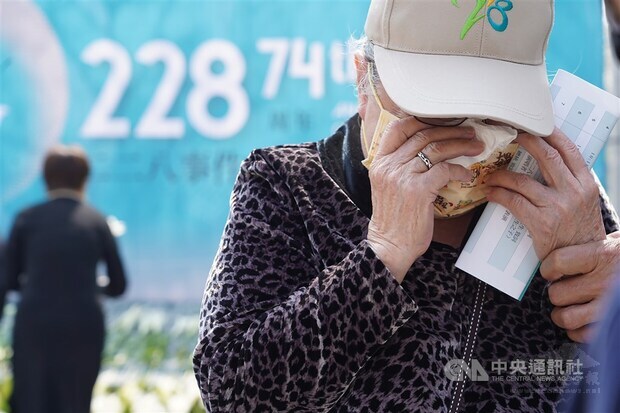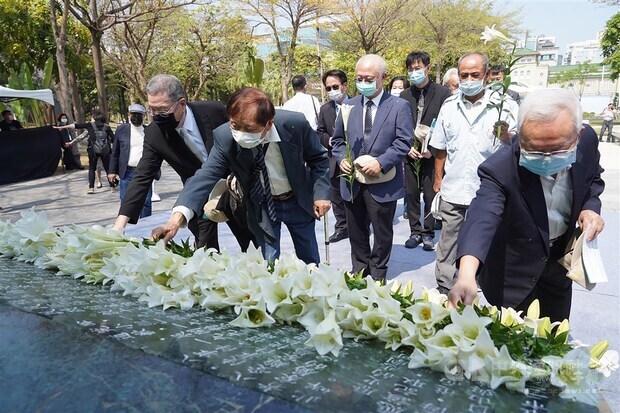


Kaohsiung, Feb. 28 (CNA) Government officials, led by President Tsai Ing-wen, on Sunday attended an event commemorating the 74th anniversary of the 228 Incident, a civil uprising that led to a bloody government crackdown.
During the ceremony held in Kaohsiung, Tsai said the event represented the government's repentance over past mistakes and served as a reminder that people should cherish their hard-earned freedoms.
"Facing history with honesty will enable the Taiwanese people to understand how governments violate human rights under authoritarian regimes," Tsai said.
She said democratic values must not be traded for authoritarianism and rejected claims made by some that the diversity of opinions and ideas in democracy only creates confusion.
Three descendants of 228 Incident victims were presented with certificates to officially restore the reputations of their relatives, as most victims were labeled rioters, rebels or communist sympathizers at the time.
The 228 Incident refers to crackdown on anti-government protests that occurred from late February until mid-May 1947 in Taiwan under Kuomintang (KMT) rule.
It started with a raid on a vendor selling smuggled cigarettes on Feb. 27, which led to the death of a bystander and triggered an islandwide uprising after government guards fired indiscriminately at a protesting crowd the next day.
Although the crackdown ended in May, the KMT government would impose martial law two years later after Chiang Kai-shek lost the Chinese Civil War and retreated to Taiwan, leading to a period known locally as the "White Terror" era, when political dissidents were suppressed.
The 228 Incident and ensuing White Terror era have since become symbols of authoritarianism in Taiwan.
The commemoration has been traditionally held in Taipei, the capital city where the 228 Incident started.
However, according to Kaohsiung Mayor Chen Chi-mai, holding the event in Kaohsiung helps heal historical wounds because the city was one of the places with the highest number of casualties.
"The old Kaohsiung City government building, the campus of Kaohsiung Senior High School, and the old Kaohsiung train station are some of the places that saw a lot of bloodshed," he said in his remarks.
Hsueh Hua-yuan, chairman of the Memorial Foundation of 228, said that based on official archives, at least 10,000 people went missing or were killed during the incident.
He also said the foundation is establishing a research department this year to proactively study historical files and unearth more truths regarding the incident.
Wang Wen-hung, whose father was shot dead during the 228 Incident, called on the government to eliminate all symbols of authoritarianism in Taiwan, including converting Chiang Kai-shek Memorial Hall in Taipei to a different use.
Chen, Hsueh and Wang delivered their remarks in Hoklo, while Tsai spoke in a mixture of Mandarin and Hoklo.
Among those present were Premier Su Tseng-chang, Legislative Yuan Speaker You Si-kun, and several legislators affiliated with the ruling Democratic Progressive Party.
Former President Ma Ying-jeou of the KMT, who has previously apologized for the incident several times on behalf of the government and the KMT, attended a separate commemorative event in Taipei the same day.